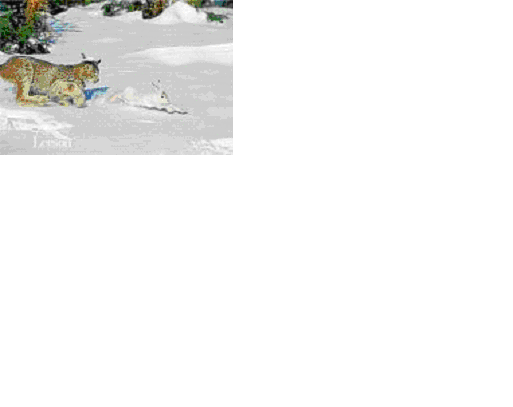The 10-year hare-lynx cycle has been cited as a text-book example of prey-predator oscillation. However, a recent study by Prof. Zhang Zhibin from the Institute of Zoology (IOZ), Chinese Academy of Sciences (CAS), shows that the snowshoe hare and lynx population oscillation might not be explained by the prey-predator interaction. This result has been published in the July issue of Climate Research.
According to the Lotka-Volterra equations, the number of lynx, seems to be relevant with its prey, the snowshoe hare. The lynx is reduced when the number of hare has decreased, and vice versa. Theoretical model and mathematical analysis prove that the Lotka-Volterra model can produce the prey-predator oscillation. This principle has been widely used to explain the classic hare-lynx cycle.
Based on the re-analysis of the classic Hudson Bay Company hare-lynx time series, the study by Prof. Zhang Zhibin and his collaborators indicates that hare and lynx population oscillation is mostly explained by intrinsic self-regulation, and by the El Nino/Southern Oscillation (ENSO), instead of by prey-predator interaction.
Prof. Nils Chr. Stenseth, a famous ecologist from the Oslo-based Centre for Ecological and Evolutionary Synthesis and the Editor of the Climate Research, made a special comment about the study in a commentary. He pointed out that this study provided valuable insights into this field and made deeper insights to the effects of the climate on the snowshoe hare and lynx dynamics. Prof. Stenseth also pointed out that ENSO or NAO, as the climate package index, might be more useful than climate index. He strongly called for further interdisciplinary study on meteorology and ecology to explain the complicated population dynamics patterns of animals.


